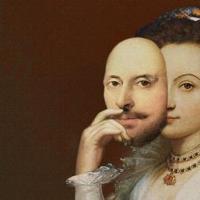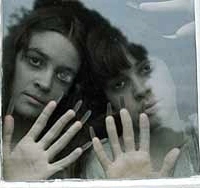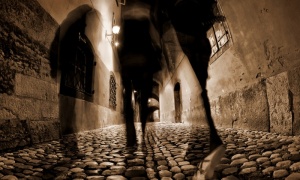Easter is at once both an interesting and a mysterious time. One the one hand it is undeniably one of the most important Christian festivals of the year but on the other it has a wide range of baffling imagery related to it – eggs, the Easter Bunny, chocolate – even the very date of Easter Day differs on a yearly basis. Where did it all come from and what does it mean? Well, the word ‘Easter’ comes from the Old English Eostre or Ostara, the name of a Germanic pagan goddess. During Ostarmonath (the Anglo-Saxon equivalent of April) feasts were held in Ostara’s honour among the then pagan inhabitants of Britain. Ostara was a major deity among the early Germanic tribes (her name still survives in the form of modern Austria) and represented, among other things, the dawn, rebirth and light. As such she was closely related to the Greek Eos, the Roman Aurora and the Indian Usha. Given Easter’s association with the death and rebirth of Jesus Christ, it is also possible to begin to see a connection between this pagan goddess and one of Christianity’s major holy days.
 Ostara was also closely associated with spring, the traditional time of year for all living things to be ‘reborn’ after winter finally loosens its grip on the world, and hence the naming of the fourth month of the Anglo-Saxon year in her honour. Ostara’s sacred animal was the hare, the predecessor of the modern day Easter Bunny. Rabbits and hares were fertility symbols in antiquity – since they gave birth to large litters in the early spring, these became symbols of the rising fertility of the earth at the Vernal Equinox. Lagomorphs are also prolific breeders – female hares can conceive a second litter of offspring while still pregnant with the first. It is therefore not surprising that rabbits and hares should become fertility symbols, or that their springtime mating antics should enter into Easter folklore. The exchange of eggs, coloured and placed at graves (probably as a charm of rebirth), is also a leftover from pagan times. Eggs, which tended to be laid in great numbers by wild birds in the spring, were also intimately associated with Easter ideas of rebirth and fertility. They tended to be painted red – for blood and sacrifice – or green – in honor of the new foliage emerging after the long dead time of winter.
Ostara was also closely associated with spring, the traditional time of year for all living things to be ‘reborn’ after winter finally loosens its grip on the world, and hence the naming of the fourth month of the Anglo-Saxon year in her honour. Ostara’s sacred animal was the hare, the predecessor of the modern day Easter Bunny. Rabbits and hares were fertility symbols in antiquity – since they gave birth to large litters in the early spring, these became symbols of the rising fertility of the earth at the Vernal Equinox. Lagomorphs are also prolific breeders – female hares can conceive a second litter of offspring while still pregnant with the first. It is therefore not surprising that rabbits and hares should become fertility symbols, or that their springtime mating antics should enter into Easter folklore. The exchange of eggs, coloured and placed at graves (probably as a charm of rebirth), is also a leftover from pagan times. Eggs, which tended to be laid in great numbers by wild birds in the spring, were also intimately associated with Easter ideas of rebirth and fertility. They tended to be painted red – for blood and sacrifice – or green – in honor of the new foliage emerging after the long dead time of winter.
Ostara is, however, by no means the only pagan deity with a connection to Easter. The Sumerian goddess Inanna, or Ishtar (intriguingly pronounced ‘Easter’ by the Assyrians!), was hung naked on a stake, and was subsequently resurrected and ascended from the underworld. A variation on Ishtar was the Chaldean deity Astarte, who was also a sun goddess. One of the oldest resurrection myths is that of the Egyptian god Horus. Born on 25 December, Horus and his damaged eye became symbols of life and rebirth at Easter time. The Zoroastrian god Mithras was born on what we now call Christmas Day, and his followers celebrated the spring equinox at the festival known as the sol invictus – the victory of the sun. Even as late as the 4th century AD, the sol invictus and its association with Mithras, continued to be celebrated. The Norse goddess Freya, being primarily a fertility deity, is also sometimes identified with Ostara. Scandinavia, incidentally, is a region that has some of the most interesting Easter customs in the world. In Norway, in addition to staying at mountain cabins, cross-country skiing and painting eggs, a contemporary tradition is to read or watch murder mysteries at Easter. In Finland, Sweden and Denmark, traditions include egg painting and small children dressed as witches collecting candy door-to-door, in exchange for decorated pussy willows. For lunch or dinner on Holy Saturday, families in Sweden and Denmark traditionally feast on a smörgåsbord of herring, salmon, potatoes, eggs and other kinds of food, after which bonfires are lit to celebrate the light of spring.
Easter is a moveable feast, meaning it is not fixed in relation to the civil calendar. The First Council of Nicaea (325) established the date of Easter as the first Sunday after the full moon (the Paschal Full Moon) following the northern hemisphere’s vernal equinox. It has to be said, however, that basing the date of a holy festival on the phases of the moon is a distinctly pagan concept. The moon was venerated for centuries before the birth of Christianity, by turns as a deity in its own right and as the symbol of a range of gods and goddesses in the ancient world. Going back to Astarte, hot cross buns were a feature of her worship for hundreds of years before Christ. It is thought that they represented the constellation of the Southern Cross, where the sun would symbolically go to die and be reborn, thereby overcoming the powers of darkness. The association of chocolate with Easter is more specifically Christian. In the ecclesiastical calendar, Easter came at the end of Lent, which was a period in which a devout follower traditionally gave up especially rich or animal foods such as eggs, milk, cheeses and (eventually) chocolate. Mardi Gras (or fat Tuesday – the time to eat, drink and do everything to excess) was the last day of partying and feasting before Ash Wednesday, the beginning of Lent. Consequently on Easter all the rich foods that had been given up for Lent were used to make special dishes and gifts. Chocolate, as a luxury item, inevitably became associated with the gift-giving of the season.
I’ll repeat that I’ve always found Easter to be one of the most interesting and mysterious holidays of the year. As illustrated above, its roots and traditions derive from a bewildering array of sources from all over the world and all through history. So, whatever you’re doing this Easter, I hope I’ve given you something to think about when you go egg-hunting, eat chocolate or bake hot cross buns. Oh, and look out for the Easter Bunny – there’s more to him (or should I say her) than it seems!

















Fascinating. 🙂
Reblogged this on Adventures and Musings of a Hedgewitch and commented:
Great post in traditions of the season. Good thing the Littlest Druid solved a mystery this week.
I, too, find Easter to be one of the most fascinating holidays, only moreso now than ever. As a child, we only celebrated Easter by going to a church service (not usually the sunrise service), but never really had special meals or Easter baskets (unless grandma and grandpa were in town). But lately I had begun noticing all kinds of interconnectedness between this Christian tradition and so-called “pagan” traditions. I am almost at a point where I think Christianity hijacked most of these from the Pagans. I used to read that it was because they were either persecuted or trying to make their own holidays interesting to a majority who were “pagans”. And maybe that was in part true…but I also feel that many post-Christ’s-era people who wanted to spread their own brand of Christianity use these appropriated traditions to undermine the “pagan” ways.
Okay, first let me say thank you for checking out my blog way back when, not because my blog is that great or anything, but because it led me in turn back here, where each week you dish up these well-written, fascinating treatises on a wonderful array of topics. This Easter post is the best yet. I will be pestering my wife and family with these facts for days to come!
I just purchased Wydda because if your weekly posts are this fun, I should be reading your books as well. Cheers.
Thanks so much, hope you enjoy it!
Reblogged this on ick0blogs and commented:
It is interesting..
That answers that question!
The reason Easter is scheduled based on the moon is that Jesus was crucified at the Jewish holiday of Passover (Passover brought a huge number of visitors to Jerusalem, which made the Roman authorities even more nervous and punitive than usual – the Romans seem to have considered him a political threat). And Judaism uses a modified lunar calendar for religious purposes. This is certainly a Middle Eastern pattern, but I don’t think most people would consider Judaism pagan.